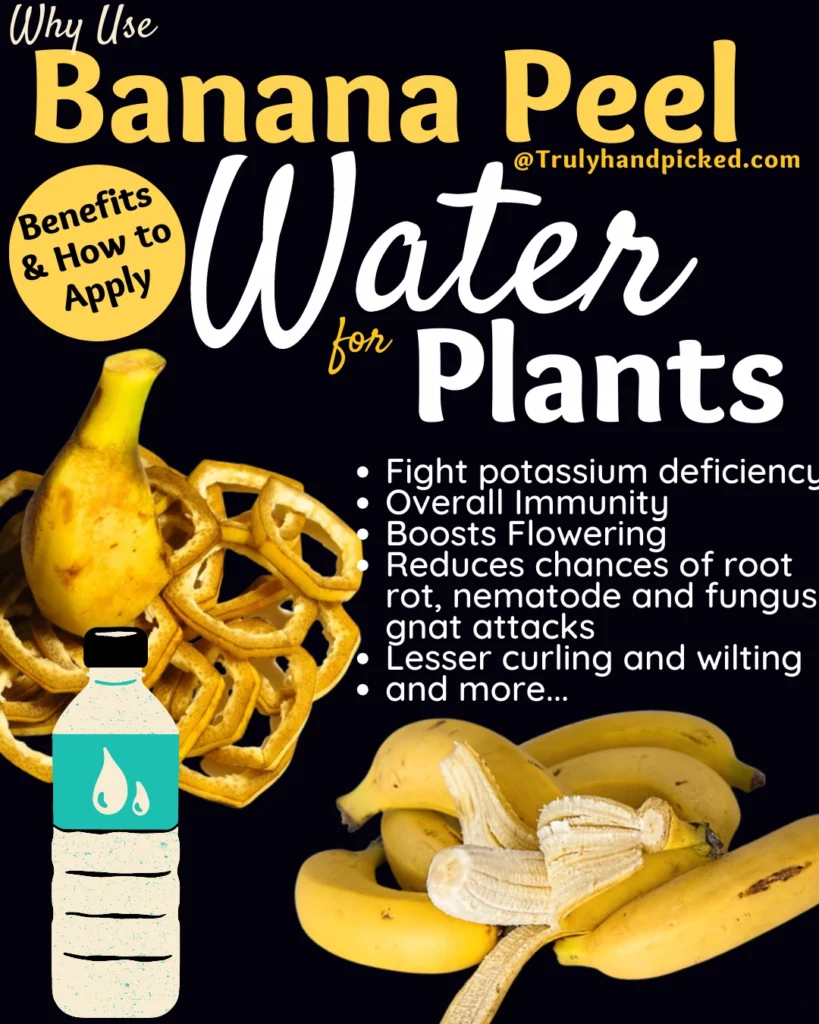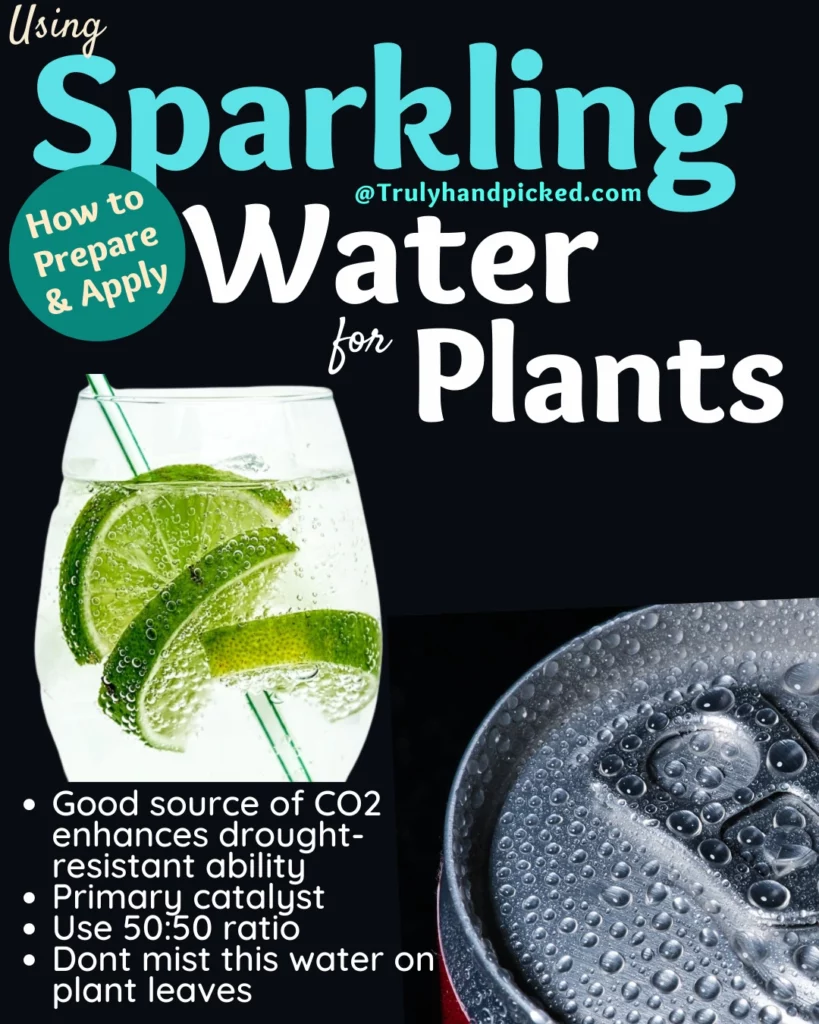Banana Peel Water for Your Plants:
Banana peel water is one more useful option you can consider here to nutrify your plant organically. However, it has some drawbacks and consequences along with nutritional value.
Note Banana peel water cant be used as a complete fertilizer for your plants. Banana peel water is like an additional liquid fertilizer. More or less like a potassium booster. So we have to use our regular organic and liquid fertilizers to provide complete nourishment for all plants
While it is also good to toss the banana peels in compost, as composted banana peels do reach your plants and are easy to absorb like banana water.
Thus, some gardeners tend to pick other alternatives instead of this one. Its alluring smell attracts some insects to your plants as well, which works like a backfire as a fertilizer.
Banana water may not be beneficial as other cooking water, but it has some of its significant advantages when used as a fertilizer.
Modern-age pro gardeners claim that using banana or banana peel in their compost bin is more beneficial than utilizing banana water.
Unfortunately, that needs a lot more extended period, comparing banana water. Hence, explore the benefits we can get from banana water in this attempt –
Benefits of Banana Water:
- Help to fight potassium deficiency in your plant
- Enhance the overall immunity power of your plant
- Support your plant to deal with the over-watered condition
- Strengthen the resistance of your plant to fungus gnats and bacterial infestations
- Reduce the possibility of root rot
- Diminish the probability of nematode attacks
- Decrease the chances of leaf problems like curling or wilting or discolored leaves
- And this water solution is free of cost as it is made out of kitchen scarp, you see
Nutrients in Banana Water for Plants
- Potassium (K): Banana peels are particularly rich in potassium, an essential nutrient for plant growth and development. Potassium plays a vital role in root development, flowering, and fruiting.
- Phosphorus (P): Banana peels also contain phosphorus, which is crucial for energy transfer, photosynthesis, and overall plant health. Phosphorus supports strong root systems and helps plants develop healthy flowers and fruits.
- Calcium (Ca): Banana water may contain traces of calcium from the peels. Calcium is important for cell wall formation, nutrient uptake, and overall plant structure.
- Magnesium (Mg): Magnesium is another nutrient found in banana water. It is involved in chlorophyll production, which is essential for photosynthesis and overall plant growth.
- Trace Elements: Banana peels can contain trace amounts of various micronutrients like iron (Fe), manganese (Mn), zinc (Zn), and copper (Cu), which are essential for various plant functions and enzyme activity.
How to Prepare Banana Peel Solution:
- Collect 2-3 peels from fully ripe banana and cut them into small pieces
- Place those in a saucepan and add 2-3 cups of water to it
- Set it on your gas stove or induction and let simmer
- Let the solution boil for 30-45 minutes continuously
- After that, turn the heat off and strain the solution into another pot
- If you want to use the goodness of banana water without boiling it, try steeping them in the water
- Take the pieces of fresh banana pieces similarly and place them in a pot
- Fill the pot with filtered water and set the lid tightly
- Let the peels steep there for 10-12 days this way and then, use them accordingly
How to Apply:
- Apply the water to the soil of your plant directly
- Use this solution once a week for one month consistently
- This solution is rich in potassium, so, pick a low-k fertilizer with this water
- Try not to use this for misting or watering the top of your plant, as it may attract some pests to your plant naturally.
Which plants like banana water?
- Roses: Give your roses a boost by using banana water as a fertilizer. The potassium and phosphorus in banana peels promote healthy blooms and root development.
- Tomatoes: Help your tomato plants thrive by using banana water. The potassium content can enhance fruit production and overall plant health.
- Houseplants: Several houseplants, such as philodendrons, pothos, and spider plants, appreciate the nutrients in banana water. Dilute it and use it as a fertilizer during regular watering to nourish your indoor greenery.
- Orchids: Orchids can benefit from the nutrients found in banana water. Use it sparingly and diluted to give them a nutritional boost.
Remember to dilute the banana water before application, and don’t rely solely on it for plant nutrition
Banana Water on plant growth – How Effective Is Banana Water?
When it comes to the effectiveness of banana water on plant growth, it’s important for you to set realistic expectations. Though banana water contains nutrients that can benefit your plants, it’s not a magical solution that guarantees rapid growth.
Banana water can provide a mild boost to your plants because it contains potassium, phosphorus, and trace elements.
These nutrients can support their overall health and development. However, it’s crucial to remember that the impact may not be as significant as using balanced fertilizers specifically designed for plant nutrition.
To get the most out of banana water, consider it as a supplemental treatment rather than a complete solution. You can use it to give your plants an extra nutrient boost, especially if they appreciate potassium. However, don’t rely solely on banana water to provide all the necessary nutrients for optimal growth.
Carbonated Water/Sparkling Water for plants:
We often hear that carbonated water is not good for our health, in everyday life. Contradictorily, it works beneficial for the health of our plants! carbonated water is made of infused water and CO2 under high pressure.
This fizzy or sparkling solution can unusually nourish your plant, unlike other water solutions. This kind of water solution naturally contains many plant nutrients, such as sodium, sulfur, phosphorous, magnesium, potassium, calcium, etc.
Using carbonated water to plant usually hampers the roots by tempting their water-soaking quality. So, using this water more frequently would not be a good idea for your plant.
However, let’s learn the accurate use process of this water solution in this regard along with its advantages-
Benefits of Sparkling Water:
- This is a natural source of CO2 and thus can nourish your plant temporarily
- The other micronutrients found in this product are calcium, potassium, phosphorus, magnesium, etc.
- Roots can soak this kind of carbonated solution more quickly than other liquid fertilizers
- Stimulate the drought-resistant quality of your plant
- Boost the normal growth rate of your plant
- Converse more water from the solution due to the richness of CO2
- And enhance the vital metabolic processes in your plant due to being a primary catalyst
Related: Indoor plants that grow in water
Note: Avoid using it often.
Is carbonated water good for plants? Carbonated water contains dissolved carbon dioxide (CO2), which can lower the pH level of the soil and potentially harm plant roots. It may also disrupt the balance of beneficial microorganisms in the soil
How to Apply Carbonated Water:
- Let the carbonated drink turn to normal room temperature first, before applying
- Now prepare a mix with carbonated drink and water in a watering can with a 50:50 ratio
- Then, use this solution by dripping it into the soil slowly
- Always try to apply it at the base of your plant carefully and never let the foliage wet with it
- This kind of drink comes with a lot of sugary content and thus, invites pests and bugs to your plant
- So, never use this solution to mist any of your plants ever
- Try this water solution once a week, after preparing and following this routine for 1-2 months consequently.
Related: Aquatic plants for small ponds.
How to Make Tap Water Safe for Plants:
Tap water usually comes with some harmful chemicals and bad nutrients, which make them unusable for plants. Chlorine is that bad component that exists in normal tap water making it detrimental for your green friends.
There are some other bad elements too, which turn the choice of tap water for your plant into a nightmare.
Why Tap Water Is Harmful to Plants:
- It is rich in chlorine content thus killing the good bacteria
- This will dissolve calcium and magnesium more frequently in the soil
- Tap water potentially makes your soil high in pH and causes stunt growth
- It contains high drops of limestone deposited and causes root issues
- Come with some unwanted contaminants and initiates bacterial or fungal infestation
- Contains chemical components and hampers the overall thrive rate
- It layers the soil and thus causes, salt-buildup
- And can cause root rot due to creating bacterial or fungal issues in the soil
Related: How to Water my plants while away
How to Turn Tap Water Safe For Your Plants:
However, it is not always possible for gardeners to water their plants with distilled or filtered water due to the high expenses behind this attempt.
In such a matter, you can apply some simple tricks to make your normal tap water used for gardening. These hacks will eliminate all those harmful components from tap water and turn it safe for your plant effectively.
Let’s check those tricks out and save your money from wasting on simple watering methods for a successful planting experience-
- Let the water boil first before applying it to your plants
- Try to let the water cool down after boiling for 10-15 minutes
- Or collect some tap water and let it stay under direct sun for 24 hours before using
- This process will evaporate the utmost harmful content from the water naturally
- Set a water filter at the mouth of your tap, this will purify the water before reaching our plants
- Pour some water into the cylinder of charcoal, wait for 30-50 seconds and filter the water
- You can use this water instantly for your plant to hydrate it adequately
- Collect a bucket of water and drop a purification tablet into it, wait for 2-3 hours and use it accordingly
- Take 1-2 liter of tap wat and drop 6-12 drops of liquid bleach into it, then shake the solution once and let steep
- Wait for 30 minutes and then use it to water your plant normally
- Otherwise, tie a clean piece of cloth at the mouth of your tap and let the water come with a natural filtration. This method will work for a mild amount of filtration for a normal tap water
So, try these simple and inexpensive hacks to filter your tap water properly before applying. This will help you to evade any kind of damaging experience of watering your plant efficiently.

